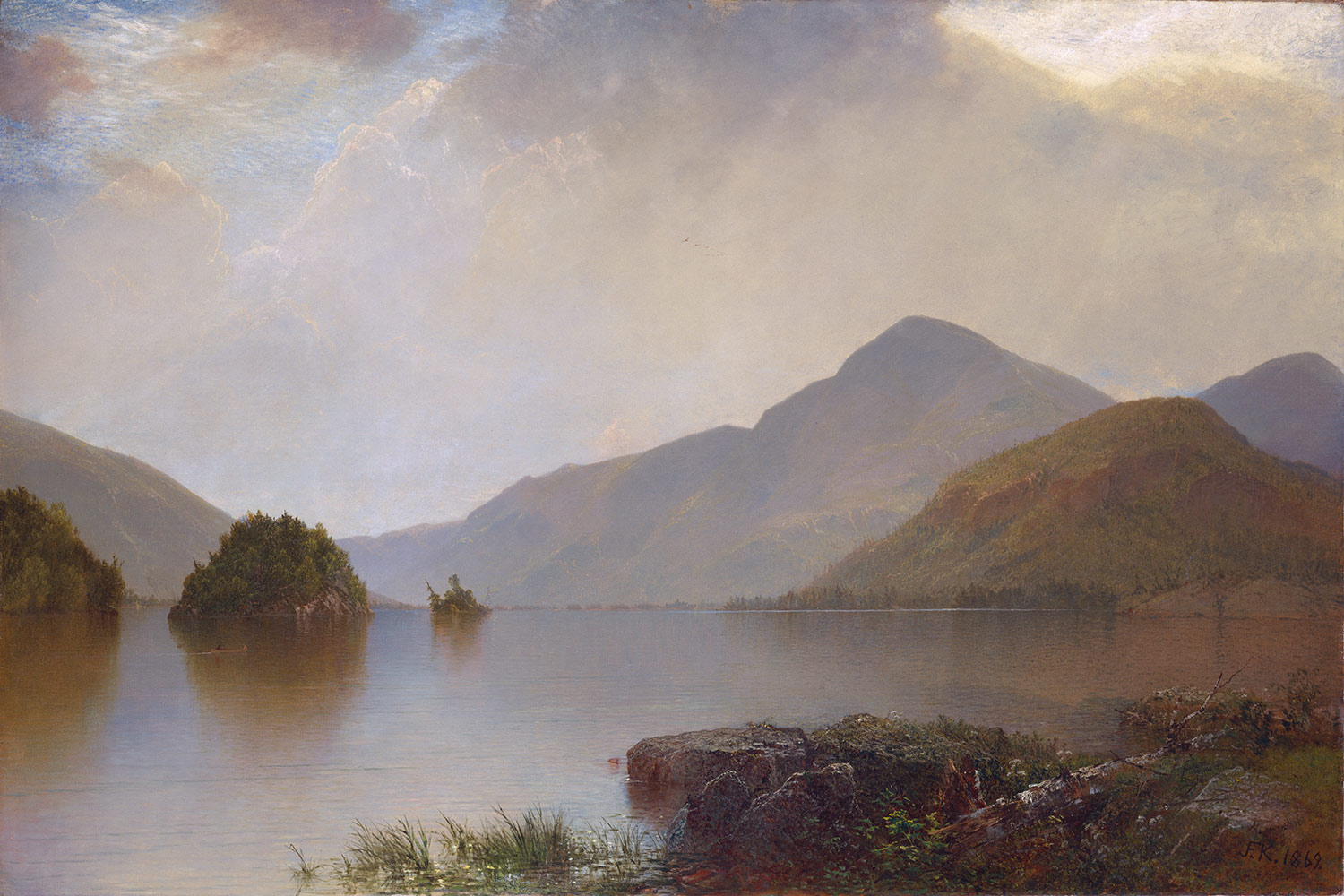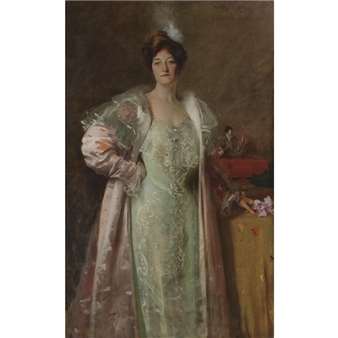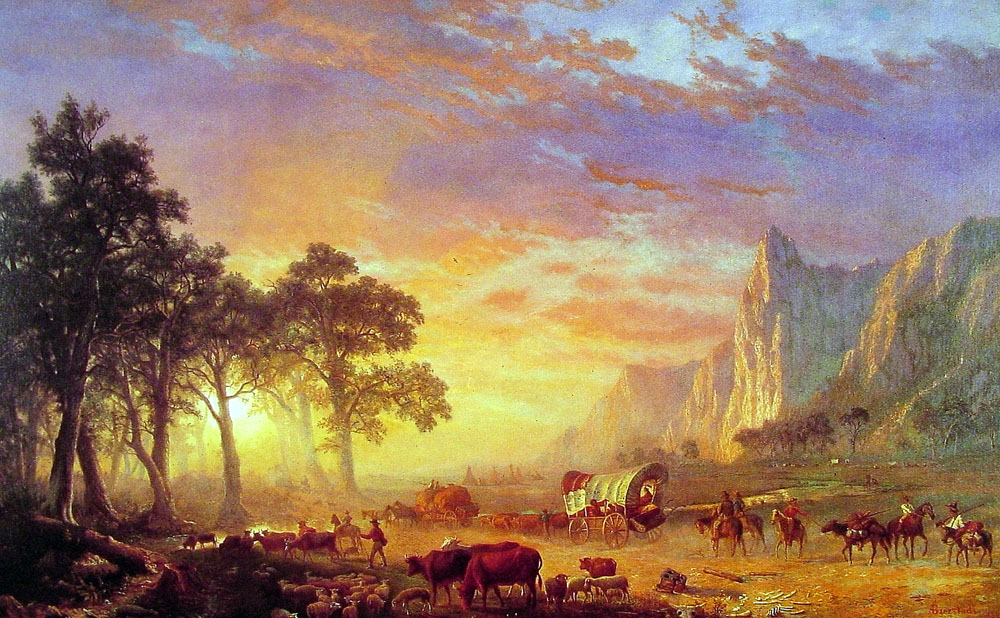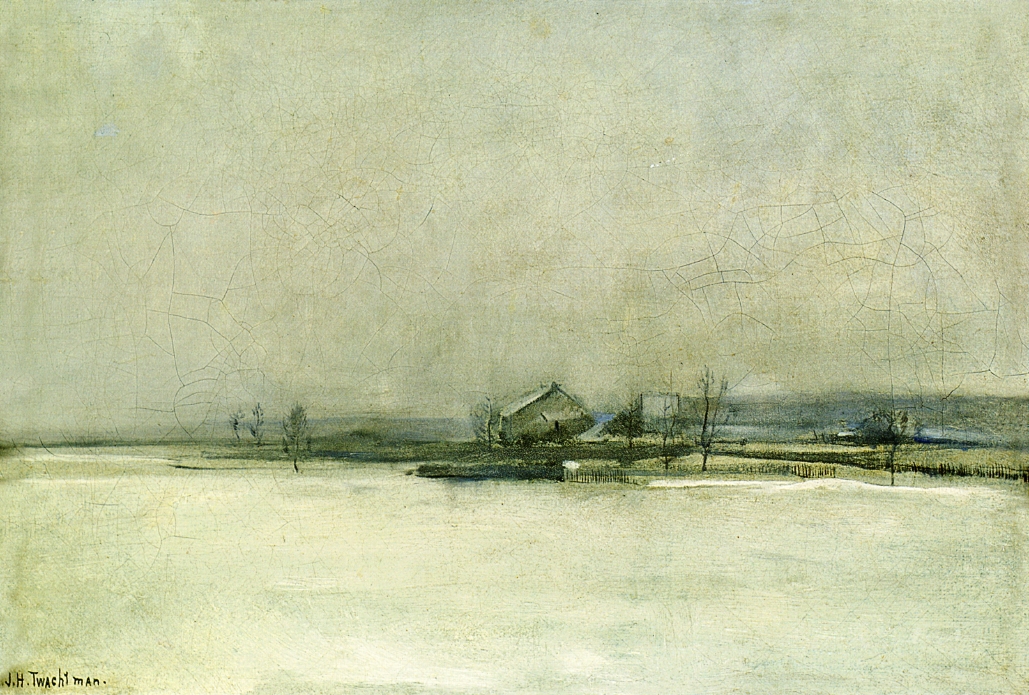Gerald Peters Gallery presents American Art 1850-1950, an exhibition tracing the aesthetic development of the fine arts in the United States from the Hudson River School, the first self-conscious artistic movement to crystalize in the United States, through the end of American Modernism, when American art emerged as the leader in the global art world.
Thomas Anschutz, Near Cape May, 1894, watercolor on paper, 10 x 14 3/8 inches
Thomas Anschutz, Near Cape May, 1894, watercolor on paper, 10 x 14 3/8 inches
This exhibition includes
John Frederick Kensett’s Lake George,
which gave visual form to the pervasive cultural ideals of Emersonian philosophy, and Albert Bierstadt’s Sunrise on the Platte (Scotts Bluff),
which provided a window onto the frontier as the concept of Manifest Destiny gained traction in the nineteenth century.
William Merritt Chase’s society portraits, represented by
Miss J (Content Aline Johnson),
documented the emergence of the robber barons, many of whom helped send the next generation of artists to Europe.
John Henry Twachtman and his contemporaries returned from abroad to translate the theories and techniques of Europe’s emerging avant garde into a new American idiom. Twachtman’s Barn in Winter and Thomas Wilmer Dewing’s Purple and Green are masterpieces of American Tonalism that introduced a level of abstraction into American art that developed in the twentieth century into several strains of American Modernism.
Max Weber’s Joel’s Café
and Marsden Hartley’s Flowers in a Vase
are just two examples that show the energy, inquisitiveness, and innovation that pervaded American art in the first decades of the twentieth century and that sowed the seeds for the artistic revolution that made the United States the center of art at mid-century.
John Frederick Kensett’s Lake George,
which gave visual form to the pervasive cultural ideals of Emersonian philosophy, and Albert Bierstadt’s Sunrise on the Platte (Scotts Bluff),
which provided a window onto the frontier as the concept of Manifest Destiny gained traction in the nineteenth century.
William Merritt Chase’s society portraits, represented by
Miss J (Content Aline Johnson),
documented the emergence of the robber barons, many of whom helped send the next generation of artists to Europe.
John Henry Twachtman and his contemporaries returned from abroad to translate the theories and techniques of Europe’s emerging avant garde into a new American idiom. Twachtman’s Barn in Winter and Thomas Wilmer Dewing’s Purple and Green are masterpieces of American Tonalism that introduced a level of abstraction into American art that developed in the twentieth century into several strains of American Modernism.
Max Weber’s Joel’s Café
and Marsden Hartley’s Flowers in a Vase
are just two examples that show the energy, inquisitiveness, and innovation that pervaded American art in the first decades of the twentieth century and that sowed the seeds for the artistic revolution that made the United States the center of art at mid-century.
American Art (1850-1950) is the first historical exhibition that Gavin Spanierman has organized since joining Gerald Peters Gallery, New York, as Managing Director in 2014. It combines Spanierman Fine Art’s rich inventory of Hudson River School and American Impressionist works with Gerald Peters Gallery’s holdings of American Modernism. The exhibition draws on Gavin Spanierman’s vast knowledge of American art and his fierce commitment to promoting those works by the paragons of American Art history that continue to define our cultural and artistic heritage, and to fostering interest in works by lesser-known, but no less talented, artists of the nineteenth and twentieth centuries.
American Paintings 1850-1950 can be seen at Gerald Peters Gallery, 24 East 78th Street, New York, NY 10075, from October 10 through November 21, Monday through Friday, 10am-5pm, or Saturday noon to 5pm. A catalogue of the exhibition will be available for purchase at the gallery.
Similar images:
The Oregon Trail - Albert Bierstadt
Winter Landscape with Barn - John Henry Twachtman
Woman in Purple and Green by Thomas Wilmer Dewing,
Similar images:
The Oregon Trail - Albert Bierstadt
Winter Landscape with Barn - John Henry Twachtman
Woman in Purple and Green by Thomas Wilmer Dewing,






